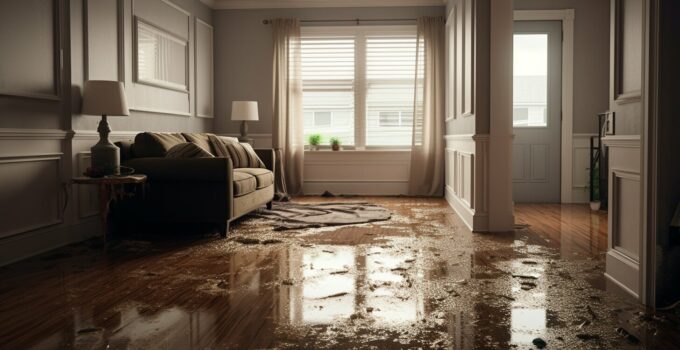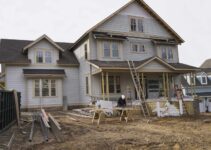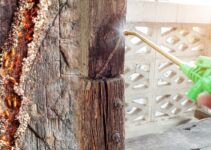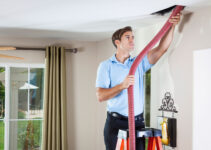Key takeaways:
- Water damage can arise from natural disasters (hurricanes, floods) and human error (plumbing failures, overflowed fixtures).
- Plumbing failures, such as burst pipes or corroded fixtures, are a leading cause of water damage.
- Signs of plumbing issues include green stains, low water pressure, and unusual sounds in the system.
- Seepage and humidity can cause unnoticed damage, leading to structural problems and mold growth.
- Ignoring water damage can compromise safety, lead to costly repairs, and negatively affect property value.
- Mold and mildew growth is a significant health risk after water damage, affecting vulnerable populations.
- Regular inspections for leaks and dampness can help identify issues before they escalate.
- Proactive home maintenance, such as roof inspections and proper drainage, can prevent water intrusion.
- Smart home technology can help detect leaks and monitor moisture levels in real time.
- Assess whether to DIY or hire professionals based on the severity of water damage and required expertise.
- The restoration process includes removing water, drying the area, and repairing damage thoroughly.
- Future-proof your home with routine checks and smart monitoring systems to prevent the recurrence of water issues.
Page Contents
The Hidden Triggers ─ Unraveling the Causes of Water Damage
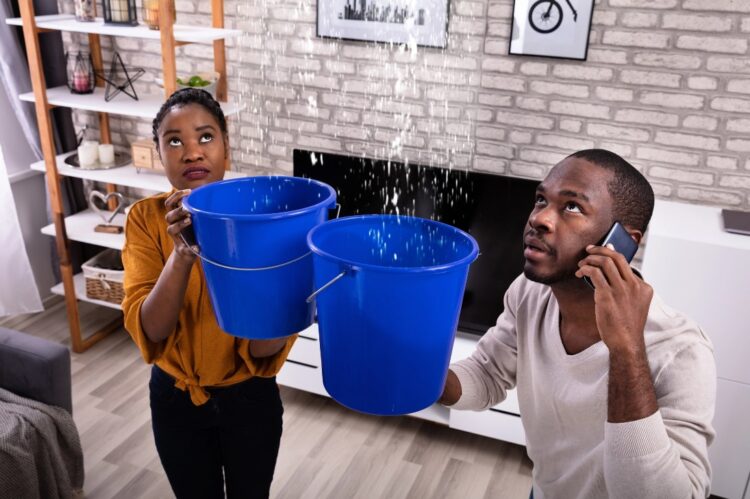
Source: servpro.com
From Natural Disasters to Human Error ─ The Many Faces of Water Damage
Water damage is a pervasive issue that can wreak havoc on homes and businesses alike. It can stem from a variety of sources, each with its own set of implications. Natural disasters such as hurricanes, floods, and heavy storms can introduce vast amounts of water into structures, often overwhelming standard preservation systems.
These events are typically unpredictable and can leave a trail of destruction in their wake, impacting entire communities. Flooding from rivers, lakes, or oceans can cause extensive damage to properties located in low-lying areas, prompting homeowners to consider the location’s risks before purchasing a property.
However, not all water damage is the result of natural disasters. Human error plays a significant role, accounting for incidents that may seem mundane yet can lead to significant consequences. Common culprits include overflowing bathtubs, improperly installed appliances, and even simple mistakes like leaving the faucet on.
According to insurance industry statistics, roughly 40% of all water damage claims stem from issues related to plumbing failures. This highlights the importance of vigilance and proper maintenance of household fixtures. Overall, understanding the variety of causes is a crucial first step in water damage prevention.
Understanding Plumbing Failures ─ When and Why They Happen
Plumbing failures are one of the primary causes of water damage, comprising a broad spectrum of issues. Common problems might include burst pipes, corroded fixtures, and sewer backups, all of which pose significant risks to the integrity of a home. These failures can happen for various reasons, such as age, wear and tear, and even environmental factors, like temperature fluctuations that cause pipes to freeze and subsequently burst. The average lifespan of a plumbing system is roughly 30 to 50 years, depending on the materials used and the level of maintenance they receive.
However, older plumbing systems made from outdated materials such as lead or galvanized steel may fail prematurely. Homeowners should consider regular plumbing inspections and audits to mitigate risks. There are also some telltale signs indicating impending plumbing failures, including green stains around fixtures, low water pressure, and unusual sounds in the plumbing system, which should not be ignored. Addressing these issues proactively can save both time and money in the long run.
Seepage and Humidity ─ The Silent Saboteurs of Your Space
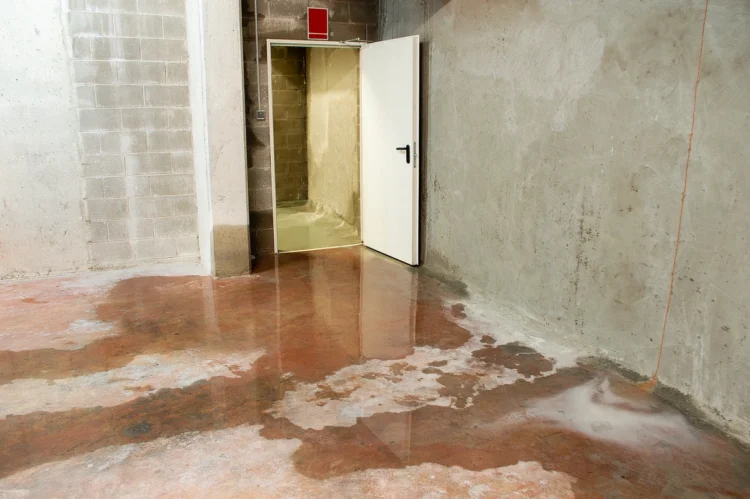
Source: ajalberts.com
While dramatic incidents like flooding make headlines, seepage, and humidity are often the quiet culprits of water damage that can go unnoticed until significant damage has occurred. Seepage refers to the slow movement of water through walls, ceilings, and foundations, often resulting from poor drainage systems, leaking roofs, or cracks in brickwork.
This slow but persistent issue can lead to serious structural dilemmas over time, including weakened foundations and compromised integrity of walls.
Equally insidious is humidity, which can create an environment conducive to mold growth and wood rot if left unchecked. Basements and attics are particularly vulnerable due to their tendency to capture moisture and poor air circulation.
Monitoring humidity levels with hygrometers can inform homeowners of necessary adjustments, such as using dehumidifiers. Investing in waterproofing measures and proper insulation can also help combat these slow-acting threats to your property.
The Ripple Effect ─ Unpacking the Consequences of Water Damage
Structural Integrity ─ How Water Can Compromise Your Home’s Safety
The implications of water damage extend far beyond the inconvenience of damp spaces. One of the most alarming consequences is the potential compromise to structural integrity. Continuous exposure to moisture can weaken the very framework of your home, jeopardizing safety in potentially catastrophic ways.
Wood, a staple material in construction, becomes especially compromised when subjected to persistent water exposure. It can warp, swell, or become a host for termites and other pests, posing significant renovation challenges.
Moreover, unseen damage might be lurking behind walls or under floors, making it crucial to address water issues immediately. Over time, even small leaks can lead to extensive damage, resulting in costly repairs that may amount to tens of thousands of dollars. Professional assessments can help uncover the extent of damage, allowing homeowners to mitigate risks and make informed decisions regarding repairs and restoration.
Health Hazards ─ Mold and Mildew in the Aftermath of Water Damage
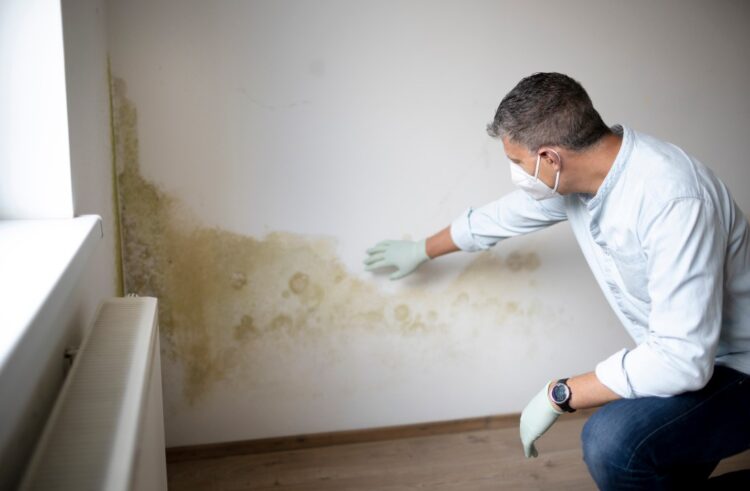
Source: steventituslaw.com
Perhaps one of the most concerning effects of water damage is its impact on health. After a water event, mold and mildew can proliferate rapidly in damp environments, presenting significant health risks to occupants. Mold spores can trigger allergic reactions, respiratory issues, and other ailments, particularly in vulnerable groups such as children, the elderly, and those with pre-existing conditions like asthma.
In addition to health risks, mold can cause extensive damage to personal property, destroying everything from carpets to structural elements. Removing mold can be an arduous process that often requires professionals equipped with the right tools and safety equipment.
Relying on do-it-yourself methods can sometimes worsen the situation, spreading spores or failing to adequately tackle the root problem. Thus, addressing moisture and repairing water damage promptly is essential not only for the home but also for the health of its occupants.
Financial Fallout ─ The Hidden Costs of Ignoring Water Issues
Ignoring water damage issues can lead not only to structural and health concerns but also to significant financial repercussions. Homeowners might not immediately recognize the costs associated with water damage until they face the reality of repairs and reconstruction. Insurance premiums can increase following claims for water-related damages, affecting long-term financial obligations.
Additionally, if moisture-related issues are not addressed early, they may lead to a complete renovation, which can be far more expensive than initial repairs.
Furthermore, properties afflicted by water damage can offer less favorable resale prospects, with potential buyers wary of inherited issues. Demonstrating that extensive repairs related to water damage have been addressed can increase buyer confidence, but failing to do so could result in a decreased property value. Taking an active approach to water damage issues not only protects physical assets but also supports long-term financial health.
Detection & Prevention ─ Early Warning Signs You Can’t Ignore
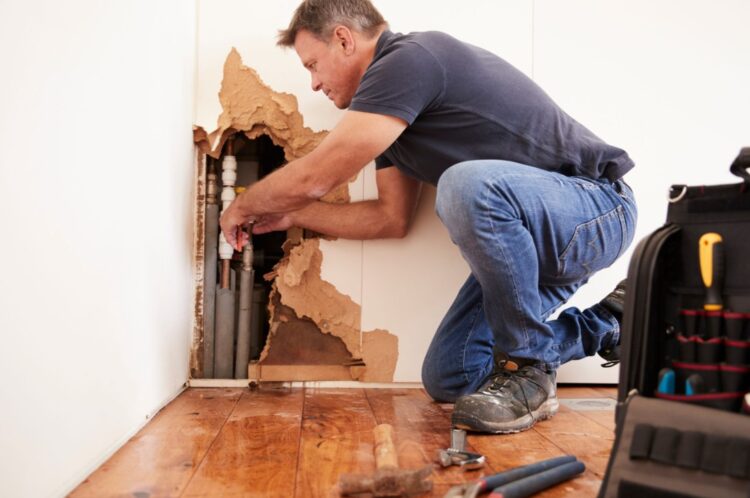
Source: sahomerestoration.com
Spotting the Signs ─ Visual Clues That Signal Trouble Ahead
The best way to manage water damage is by remaining vigilant and proactive. Homeowners should routinely inspect their properties for signs of leaks, seepage, or water damage. Visual clues can include water stains on ceilings or walls, peeling paint, or discolored patches on fabrics such as carpets and upholstery. Basements and crawl spaces can also provide significant insight; damp spots, musty odors, and visible mold are serious red flags signaling existing or impending water-related issues.
Additionally, a change in water pressure or a sudden increase in water bills can indicate hidden leaks that may require further investigation. Establishing a routine check, perhaps quarterly or biannually, can make it easier to spot these signs before they spiral into larger dilemmas.
Proactive Measures ─ How to Fortify Your Home Against Water Invasion
Home maintenance is paramount in preventing water damage. Homeowners should consider implementing several proactive measures to safeguard their properties. Regular roof inspections can help identify loose shingles, debris buildup, or damage that may allow water to infiltrate. Gutters and downspouts must be maintained and cleaned to ensure that water flows away from the foundation effectively.
Installing battery-backed sump pumps in basements is another effective approach to control water accumulation, especially in regions prone to flooding. Interior options like moisture barriers can fortify basements and crawl spaces against seepage.
Additionally, landscape grading should direct water flow away from the foundation to prevent accumulation right against your home’s walls. Adopting these strategies can significantly reduce the risk of vulnerabilities that lead to water damage.
The Role of Technology ─ Innovative Tools for Leak Detection
Advancements in technology have revolutionized water damage detection and prevention methods. Smart home technology has provided innovative ways to monitor potential water threats in real-time.
Systems that detect water leaks provide alerts straight to a homeowner’s phone, ensuring immediate attention is drawn to any issue. Infrared cameras are also commonly used by professionals to spot hidden water intrusions by identifying temperature anomalies in walls and ceilings, and identifying leaks that would otherwise remain concealed until significant damage has occurred.
Additionally, moisture meters can inform a homeowner of the humidity level within various materials, helping to indicate ongoing leaks related to plumbing issues. Using these technologies not only enhances detection but also offers peace of mind, making it easier to act before issues escalate.
Turning the Tide ─ Effective Solutions for Water Damage Restoration
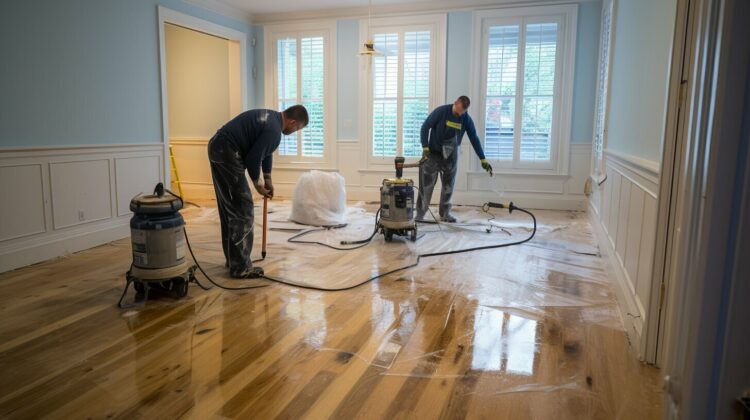
Source: greengeniewny.com
DIY vs. Professional Help ─ When to Call in the Experts
When faced with water damage, homeowners often grapple with whether to address the situation themselves or call in professionals. Smaller issues, such as minor leaks or isolated mold patches, can often be remedied with a DIY approach. There are countless resources available to guide individuals through these repairs, from how-to articles and videos to community workshops.
However, larger issues—such as significant flooding, extensive mold growth, or structural concerns—warrant an expert’s attention. For instance, attempting a DIY approach to significant structural water damage could lead to safety hazards if foundational issues are not properly assessed. Professionals can provide extensive damage assessments, access to advanced equipment, and guarantee remediation for mold and other contaminants, ensuring the job is done thoroughly. Knowledge of when to step back and get professional help is key to successful restoration.
Restoration Techniques ─ From Cleanup to Complete Rehab
After addressing immediate concerns, the restoration process will typically begin, which can involve several steps. Initially, any standing water must be removed using pumps and wet vacuums; failure to do this can lead to further damage and an increased chance of mold growth.
Subsequently, restoration efforts require thoroughly drying out the area using dehumidifiers and fans to eliminate as much moisture as possible and speed up the drying process. This can be particularly important in renowned areas like the attic and basement. Once thoroughly dried, the process transitions into repairs and remediation, which can include everything from replacing drywall to treating for mold.
Homeowners may prefer restoring materials like hardwood floors after thorough routine checks rather than replacing them, which can be more cost-effective. Ultimately, while the restoration process can be labor-intensive, it is crucial to return your home to a safe and comfortable state.
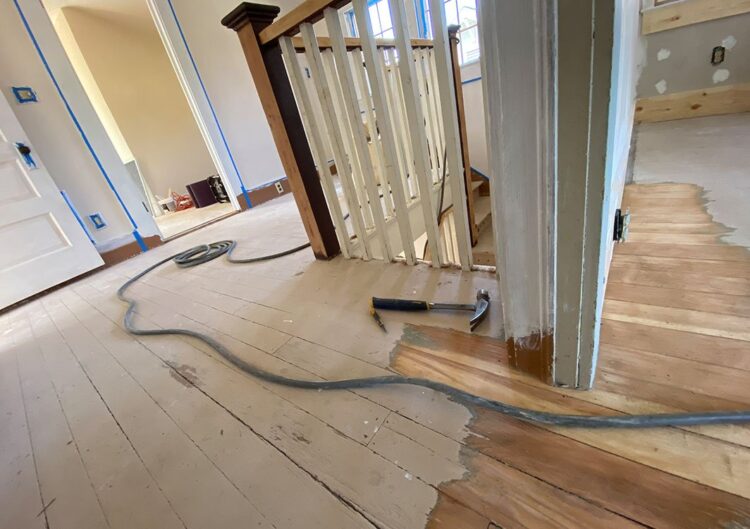
Source: neadsfloors.com
Future-Proofing ─ What You Can Do to Prevent Recurrence
Once water damage has been addressed, taking proactive steps toward future-proofing your home is essential. Insightful homeowners should develop a water damage prevention plan to ensure that their property remains safe from potential issues. This can include routine maintenance checks or even a yearly review of plumbing and drainage systems.
Additionally, integrating technology can play a significant role in creating a fortified environment. Smart home systems that continuously monitor water usage can flag anomalies or unusual trends that may signal leaks.
Finally, educating household members about water risks and vigilance can foster a culture of awareness, making it easier to detect and respond to potential threats before they escalate. With foresight and diligence, homeowners can protect their investments and ensure that their properties remain intact.

